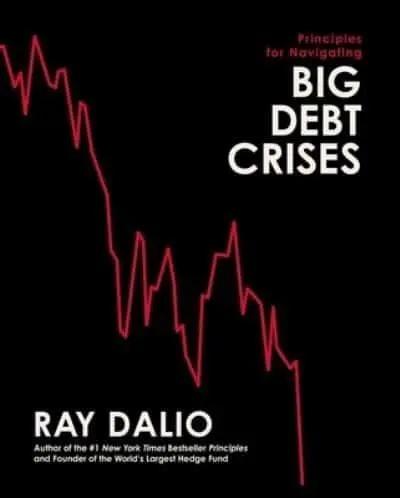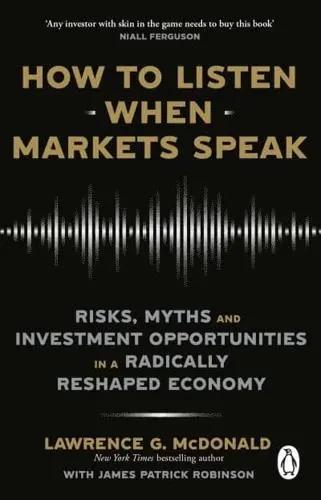The credit derivatives industry has come under close scrutiny over the past few years, with the recent financial crisis highlighting the instability of a number of credit structures and throwing the industry into turmoil. What has been made clear by recent events is the necessity for a thorough understanding of credit derivatives by all parties involved in a transaction, especially traders, structures, quants and investors. Fully revised and updated to take in to account the new products, markets and risk requirements post financial crisis, "Credit Derivatives: Trading, Investing and Risk Management, Second Edition", covers the subject from a real world perspective, tackling issues such as liquidity, poor data, and credit spreads, to the latest innovations in portfolio products, hedging and risk management techniques. The book concentrates on practical issues and develops an understanding of the products through applications and detailed analysis of the risks and alternative means of trading. It provides: a description of the key products, applications, and an analysis of typical trades including basis trading, hedging, and credit structuring; analysis of the industry standard 'default and recovery' and Copula models including many examples, and a description of the models' shortcomings; tools and techniques for the management of a portfolio or book of credit risks including appropriate and inappropriate methods of correlation risk management; a thorough analysis of counterparty risk; and, an intuitive understanding of credit correlation in reality and in the Copula model. The book is thoroughly updated to reflect the changes the industry has seen over the past 5 years, notably with an analysis of the lead up and causes of the credit crisis. It contains 50 per cent new material, which includes copula valuation and hedging, portfolio optimisation, portfolio products and correlation risk management, pricing in illiquid environments, chapters on the evolution of credit management systems, the credit meltdown and new chapters on the implementation and testing of credit derivative models and systems. The book is accompanied by a CD-ROM which contains tools for credit derivatives valuation and risk management, illustrating the models used in the book and also providing a valuation toolkit.
Preface to the First Edition Preface to the Second Edition Acknowledgements Disclaimer and Software Instructions Table of Spreadsheet Examples and Software About the Author PART I CREDIT BACKGROUND AND CREDIT DERIVATIVES 1 Credit Debt and Other Traditional Credit Instruments 1.1 Bonds and Loans; Libor Rates and Swaps; 'REPO' and General Collateral Rates 1.2 Credit Debt Versus 'Risk-Free' Debt 1.3 Issue Documents, Seniority and the Recovery Process 1.4 Valuation, Yield and Spread 1.5 Buying Risk 1.6 Marking to Market, Marking to Model and Reserves 1.7 The 'Credit Crunch' and Correlation 1.8 Parties Involved in the Credit Markets and Key Terminology 2 Default and Recovery Data; Transition Matrices; Historical Pricing 2.1 Recovery: Ultimate and Market-Value-Based Recovery 2.2 Default Rates: Rating and Other Factors 2.3 Transition Matrices 2.4 'Measures' and Transition Matrix-Based Pricing 2.5 Spread Jumps and Spread Volatility Derived from Transition Matrices 2.6 Adjusting Transition Matrices 3 Asset Swaps and Asset Swap Spread; z-Spread 3.1 'Par-Par' Asset Swap Contracts 3.2 Asset Swap Spread 3.3 Maturity and z-Spread 3.4 Callable Asset Swaps; 'Perfect' Asset Swaps 3.5 A Bond Spread Model 4 Liquidity, the Credit Pyramid and Market Data 4.1 Bond Liquidity 4.2 The Credit Pyramid 4.3 Engineered and Survey Data 4.4 Spread and Rating 5 Traditional Counterparty Risk Management 5.1 Vetting 5.2 Collateralisation and Netting 5.3 Additional Counterparty Requirements for Credit Derivative Counterparties 5.4 Internal Capital Charge 6 Credit Portfolios and Portfolio Risk 6.1 VaR and counterparty VaR 6.2 Distribution of Forward Values of a Credit Bond 6.3 Correlation and the Multi-Factor Normal (Gaussian) Distribution 6.4 Correlation and the Correlation Matrix 7 Introduction to Credit Derivatives 7.1 Products and Users 7.2 Market Participants and Market Growth PART II CREDIT DEFAULT SWAPS AND OTHER SINGLE NAME PRODUCTS 8 Credit Default Swaps; Product Description and Simple Applications 8.1 CDS Product Definition 8.2 Documentation 8.3 Credit Triggers for Credit Derivatives 8.4 CDS Applications and Elementary Strategies 8.5 Counterparty Risk: PFE for CDS 8.6 CDS Trading Desk 8.7 CDS Contract and Convention Changes 2009 9 Valuation and Risk: Basic Concepts and the Default and Recovery Model 9.1 The Fundamental Credit Arbitrage - Repo Cost 9.2 Default and Recovery Model; Claim Amount 9.3 Deterministic Default Rate Model 9.4 Stochastic Default Rate Model; Hazard and Pseudo-Hazard Rates 9.5 Calibration to Market Data 9.6 CDS Data/Sources 9.7 Model Errors and Tests 9.8 CDS Risk Factors; Reserves and Model Risk 10 CDS Deal Examples 10.1 A CDS Hedged Against Another CDS 10.2 Introduction to Bond Hedging 10.3 Hedge and Credit Event Examples 11 CDS/Bond Basis Trading 11.1 Bond Versus CDS: Liquidity 11.2 Bond Repo Cost 11.3 Bond Spread Measurement - z-Spread not Asset Swap Spread 11.4 Bond Price Impact 11.5 Embedded Options in Bonds and Loans 11.6 Delivery Option in CDSs 11.7 Payoff of Par 11.8 Trigger Event Differences 11.9 Embedded Repo Option 11.10 Putting it All Together 12 Forward CDS; Back-to-Back CDS, Mark to Market and CDS Unwind 12.1 Forward CDS 12.2 Mark-to-Market and Back-to-Back CDS 12.3 Unwind Calculation; Off-Market Trade Valuation and Hedging 12.4 'Double-Trigger CDS' 13 Credit-Linked Notes 13.1 CLN Set-Up; Counterparty or Collateral Risk 13.2 Embedded Swaps and Options 13.3 Costs 13.4 Applications 13.5 CLN Pricing 149 13.6 Capital Guaranteed Note 14 Digital or 'Fixed Recovery' CDS 14.1 Product Description 14.2 Pricing, Hedging, Valuation and Risk Calculations 14.3 Trigger Event Differences 15 Spread Options, Callable/Puttable Bonds, Callable Asset Swaps, Callable Default Swaps 15.1 Product Definitions 15.2 Model Alt

 (0 Comentarios)
(0 Comentarios)












